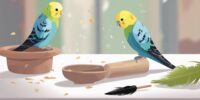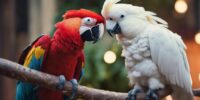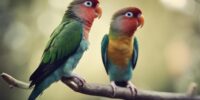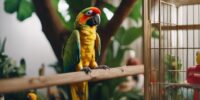How the Budgerigar (Budgie) Became a Beloved Pet Worldwide: A History
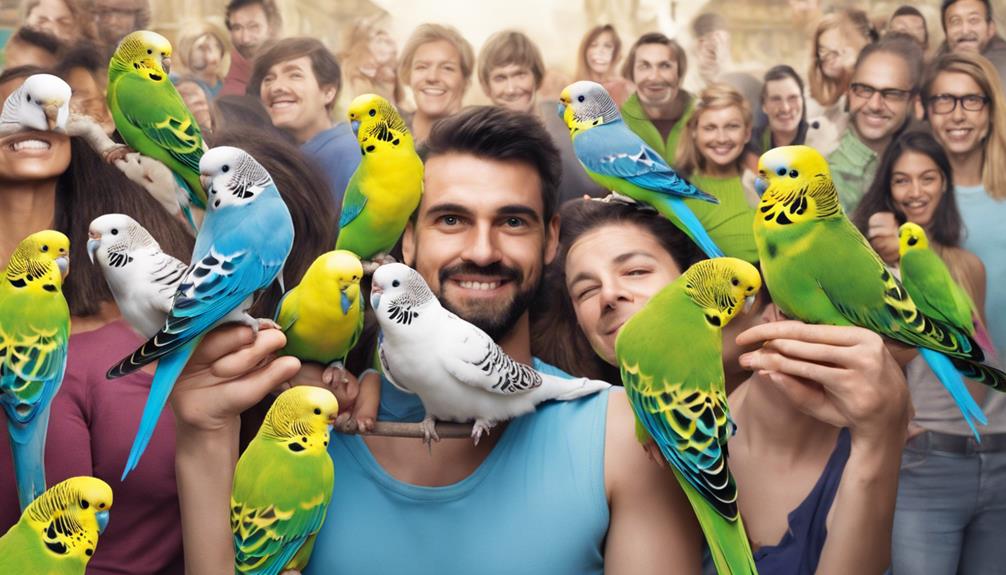
These small parrots are known for their intelligence and ability to mimic human speech, making them popular companions for bird enthusiasts.
Budgies are social creatures that thrive on interaction and can form strong bonds with their owners.
Their playful nature and acrobatic antics make them entertaining to watch and a joy to have around the house.
Origins in the Australian Outback
The Budgerigar, commonly known as the Budgie, originated in the vast and arid landscapes of the Australian Outback. This small and colorful bird is an integral part of Australian wildlife, often found in large flocks roaming the Outback in search of food and water. The Budgerigar's ability to thrive in such harsh conditions highlights its remarkable adaptability to the challenging environment of the Outback.
In terms of bird migration, Budgerigars are known for their seasonal movements in response to changing environmental conditions. While they aren't long-distance migrants like some bird species, Budgies exhibit local movements within their habitats to ensure access to essential resources. Understanding these patterns of movement is crucial for conserving Budgerigar populations and preserving their natural habitats in the Australian Outback.
Captivating Colors and Plumage
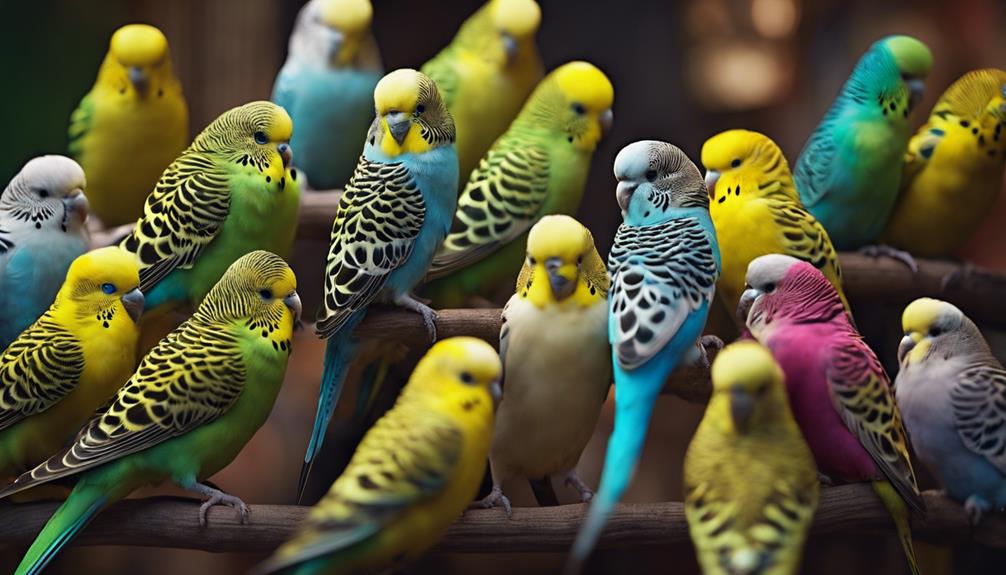
The Budgerigar, known for its captivating colors and plumage, exhibits an array of vibrant feather patterns that range from bold stripes to intricate speckles.
These birds showcase diverse color combinations, blending hues of blue, yellow, green, and white in mesmerizing displays.
Additionally, the Budgie's unique feather textures add depth and visual interest to its overall appearance, making it a truly enchanting pet to behold.
Vibrant Feather Patterns
With their captivating colors and intricate plumage, budgerigars showcase a wide array of vibrant feather patterns that have fascinated pet owners for centuries. These patterns vary from simple stripes to complex markings, making each bird unique. The most common feather patterns in budgerigars include opaline, spangle, and pied. Opaline budgies have a soft, diluted coloration, while spangle budgies exhibit clear markings with a central band of color. Pied budgerigars display patches of white or yellow on a contrasting background. Understanding these feather patterns can help breeders select for specific traits and create visually striking combinations. Below is a table summarizing the characteristics of these prominent feather patterns:
| Feather Pattern | Description | Example Colors |
|---|---|---|
| Opaline | Soft, diluted coloration | Light blue, white |
| Spangle | Clear markings with central band | Yellow, green |
| Pied | Patches of white or yellow | Blue, yellow |
Diverse Color Combinations
Exploring the captivating colors and intricate plumage of budgerigars reveals a diverse range of color combinations that have intrigued pet owners for generations. Through breeding techniques and an understanding of color genetics, breeders have been able to create stunning variations in budgie plumage.
Genetic mutations play a crucial role in the development of unique colors, prompting selective breeding to enhance desirable traits. Understanding the inheritance patterns of different color genes allows breeders to predict and manipulate the outcome of offspring colors.
Unique Feather Textures
How do genetic mutations influence the development of unique feather textures in budgerigars, contributing to the captivating array of colors and plumage seen in these beloved pets? Budgerigars, also known as budgies, exhibit a wide range of feather textures, from smooth and glossy to soft and velvety. These textures are a result of genetic variations that influence the structure and pigmentation of the feathers. Feather care plays a crucial role in maintaining the health and vibrancy of these textures. Regular grooming and providing a balanced diet rich in essential nutrients can help preserve the beauty of a budgie's plumage. Additionally, training techniques such as positive reinforcement can help reduce stress, leading to healthier feather growth.
| Feather Textures | Description |
|---|---|
| Smooth | Shiny and uniform |
| Soft | Velvety and delicate |
| Glossy | Reflective and lustrous |
Evolution of Budgies as Pets
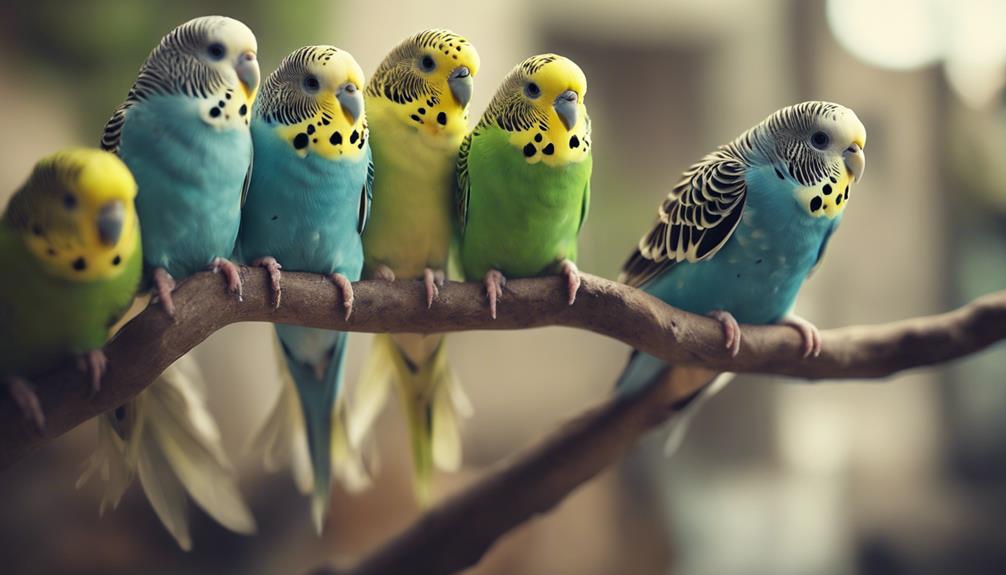
The evolution of budgies as pets can be traced back to their captivating colors and charming personalities. Their popularity skyrocketed due to their small size, easy maintenance, and ability to mimic human speech.
The strong bond that forms between budgies and their owners has solidified their place as one of the most beloved pet birds worldwide.
Popularity of Budgies
With a history dating back centuries, what factors have contributed to the exponential rise in the popularity of budgerigars as beloved pets in modern times?
The surge in budgie popularity can be attributed to advancements in training techniques and bonding methods. As owners have become more adept at understanding budgie behavior and communication, the bond between human and bird has strengthened, appealing to pet enthusiasts worldwide.
Additionally, the dissemination of health and nutrition guidelines has played a crucial role. By providing proper care, nutrition, and medical attention, budgie owners ensure the well-being of their feathered companions, promoting a positive reputation for budgies as pets.
This combination of effective training, bonding techniques, and comprehensive care has elevated budgerigars to the status of beloved pets in households globally.
Bonding With Budgies
The evolution of budgerigars as pets has been marked by a significant shift in the understanding and application of bonding techniques by owners. Establishing a strong bond with these intelligent birds is crucial for their well-being and happiness. Owners can enhance their relationship with budgies through:
- Positive Reinforcement: Using treats and praise to reinforce good behavior.
- Socialization: Allowing regular interaction with humans to build trust.
- Training Techniques: Implementing simple commands and tricks to stimulate mental activity.
- Health Care, Diet Requirements: Providing a balanced diet of seeds, fruits, and vegetables, along with regular veterinary check-ups to ensure optimal health.
Popularity Boom in the 20th Century
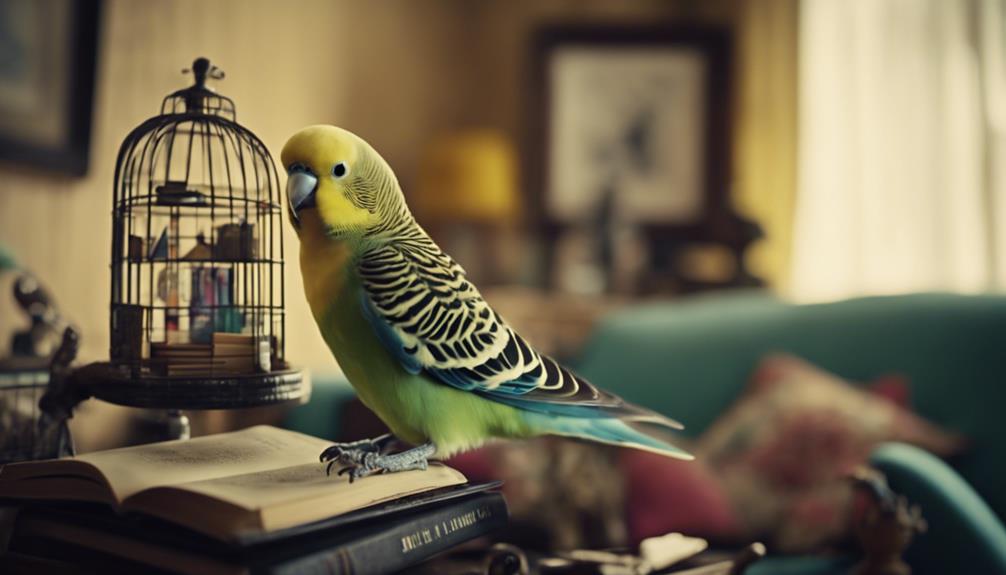
Experiencing a surge in popularity during the 20th century, the budgerigar, commonly known as the budgie, became a favored choice among pet enthusiasts worldwide. This boom can be attributed to advancements in breeding practices, leading to a wider array of colors and patterns. The cultural significance of the budgie also contributed to its rise in popularity, with its presence in various societies symbolizing joy, positivity, and companionship.
Furthermore, the genetic diversity within the budgerigar population allowed for the development of distinct traits, making them even more appealing as pets. These traits, such as their playful nature, intelligence, and ability to mimic sounds, captured the hearts of many individuals seeking a lively and interactive companion.
The behavioral traits of budgerigars, including their social nature and adaptability to human interaction, further propelled their popularity, as they were seen as ideal pets for both experienced and novice bird owners. Overall, the 20th century saw the budgie solidify its position as a beloved pet worldwide, thanks to a combination of breeding practices, cultural significance, genetic diversity, and endearing behavioral traits.
Budgerigars in Pop Culture
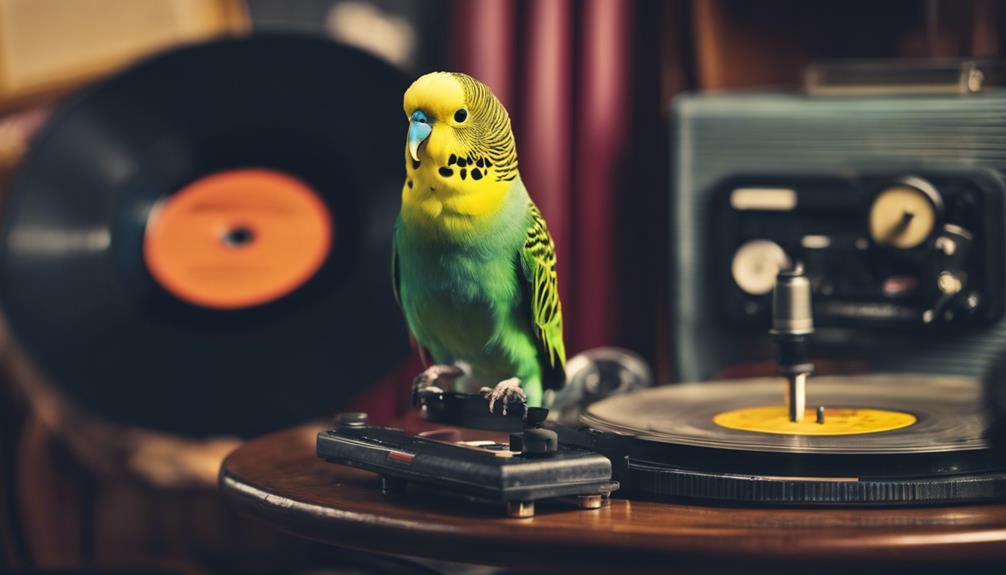
The cultural symbolism and popularity of budgerigars have led them to be prominently featured in various forms of media and art, solidifying their place in pop culture. Budgies have made a significant impact in the entertainment industry and beyond, becoming celebrities in their own right.
Budgie Celebrities: These charming birds have found their way into the hearts of many celebrities, both as pets and as symbols of elegance and grace. From famous singers to actors, budgerigars have become a beloved companion to the stars.
Artistic Representations: Budgies have been a popular subject in various art forms, including paintings, sculptures, and digital art. Their vibrant colors and playful personalities make them a favorite muse for artists worldwide.
Movie and TV Appearances: Budgerigars have made appearances in numerous movies and TV shows, often portrayed as intelligent and endearing creatures. These on-screen representations have further solidified the budgerigar's place in popular culture.
Merchandising and Branding: The image of the budgerigar has been used in merchandise and branding, symbolizing qualities such as freedom, beauty, and companionship. Their presence in consumer products further showcases their influence in pop culture.
Breeding and Varieties of Budgies
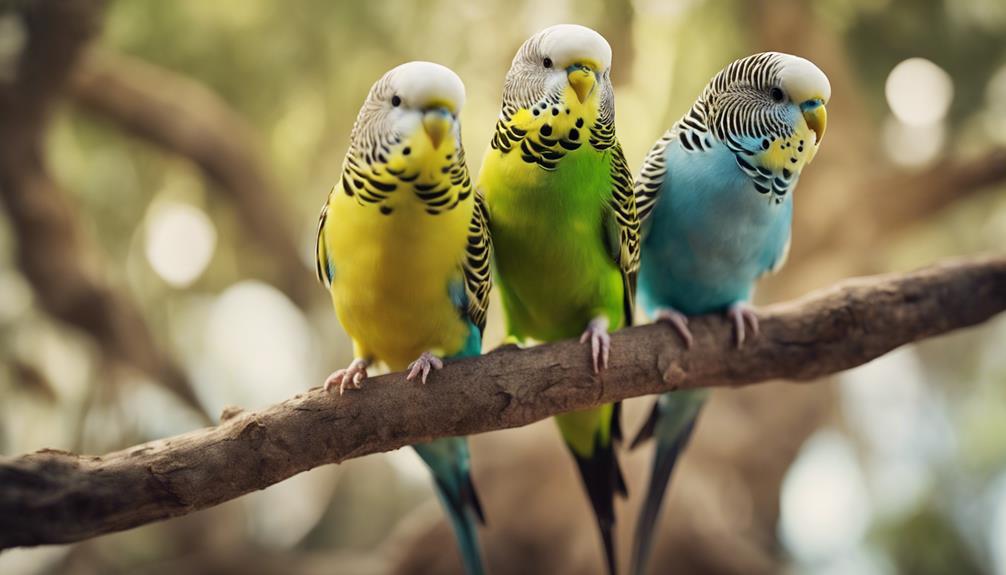
Exploring the intricate world of budgerigar breeding reveals a diverse array of varieties showcasing unique color mutations and genetic traits. Breeders employ specific breeding practices to enhance desirable traits and colors in budgies. Through careful selection and pairing based on genetic mutations, breeders aim to produce budgies that meet international breeding standards for show competitions.
Genetic mutations play a crucial role in creating the different varieties of budgerigars available today. Varieties such as the Spangle, Opaline, and Cinnamon result from specific genetic mutations that alter the budgie's feather color, pattern, or distribution. These mutations have been selectively bred over generations to stabilize the traits and create distinct varieties that enthusiasts appreciate.
International breeding standards set the criteria for evaluating budgies in show competitions. Judges assess factors like color intensity, feather condition, posture, and overall health to determine the quality of a bird. Through adherence to these standards, breeders continue to refine the diverse varieties of budgerigars, contributing to the ongoing popularity of these beloved pets worldwide.
Modern Budgerigar Care and Trends
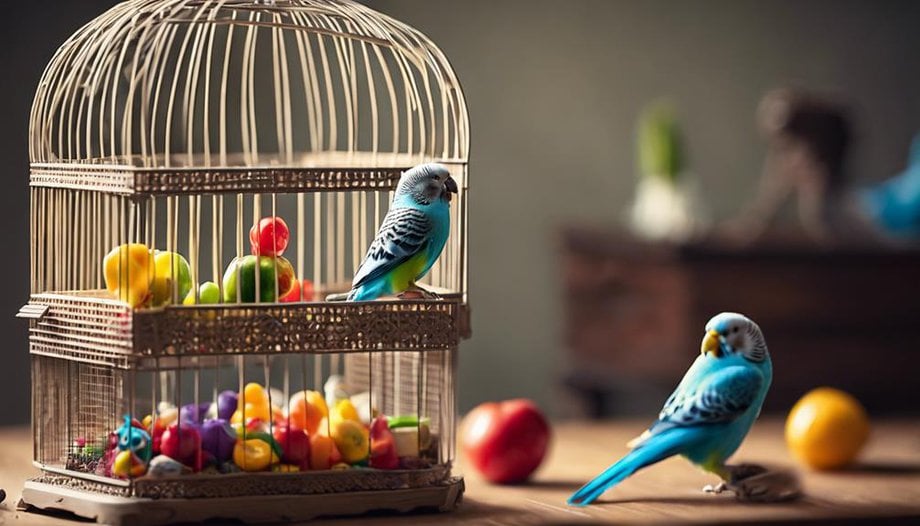
Breeders and pet owners alike are increasingly implementing modern techniques and practices to ensure optimal care for budgerigars, reflecting evolving trends in the pet bird industry. When it comes to modern budgerigar care, several key aspects are crucial:
- Dietary Preferences: Providing a balanced diet is essential for the overall health and well-being of budgerigars. Seed mixes should be supplemented with fresh fruits, vegetables, and commercial pellets to ensure they receive all necessary nutrients.
- Enrichment Activities: Engaging budgies in stimulating activities such as interactive toys, puzzles, and foraging opportunities is vital for their mental and physical health. These activities help prevent boredom and encourage natural behaviors.
- Health Concerns: Regular veterinary check-ups, proper hygiene, and observing for signs of common health issues like respiratory problems or mites are essential to maintain budgerigar health.
- Training Techniques: Positive reinforcement training methods can be used to teach budgerigars tricks, improve their socialization skills, and enhance the bond between owners and their feathered companions. Consistent, gentle training is key to successful interactions.
Frequently Asked Questions
What Is the Average Lifespan of a Budgerigar in the Wild Compared to a Pet Budgie?
In the wild, budgerigars have an average lifespan of 5-8 years, while pet budgies can live 7-15 years. The environmental impact of captivity, such as consistent food and protection from predators, contributes to their longer lifespan as pets.
Are There Any Superstitions or Cultural Beliefs Associated With Budgerigars in Different Parts of the World?
Cultural beliefs and superstitions around budgerigars vary globally. In Australia, indigenous communities view budgies as spirit guides, symbolizing freedom and communication with ancestors. This illustrates the diverse and deep-rooted connections between people and these colorful birds.
Can Budgerigars Mimic Languages Other Than English, and if So, Which Languages Are They Most Likely to Learn?
Budgerigars display remarkable linguistic abilities, influenced by cultural exposure. Their linguistic intelligence and communication skills enable them to mimic various languages beyond English. They are most likely to learn languages commonly spoken in their environment.
Are There Any Specific Health Benefits to Owning a Budgerigar as a Pet?
Owning a budgerigar can provide mental health benefits like stress relief through the bond and companionship they offer. Their presence and interactions can bring comfort and joy, aiding in reducing feelings of loneliness and anxiety.
How Do Budgerigars Compare to Other Popular Pet Birds in Terms of Intelligence and Sociability?
Budgerigars exhibit impressive cognitive abilities, learning capacity, and interaction skills. They form strong social bonds with their owners, comparable to other popular pet birds. Their intelligence and sociability make them engaging companions for bird enthusiasts.


